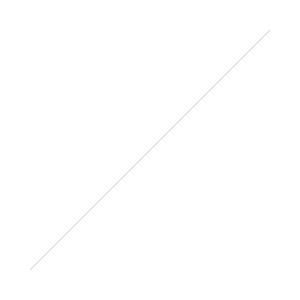Spring Photography Backgrounds and Props
/ Spring photography backgrounds and props will take your warm weather photo sessions to the next level. From simple newborn shoots in your own backyard to large weddings in fancy venues, there are spring photography backgrounds and props to fit every budget and shooting style. Don't be afraid to mix and match ideas as they work best for your photography style and your clients' preferences.
Spring photography backgrounds and props will take your warm weather photo sessions to the next level. From simple newborn shoots in your own backyard to large weddings in fancy venues, there are spring photography backgrounds and props to fit every budget and shooting style. Don't be afraid to mix and match ideas as they work best for your photography style and your clients' preferences.
 Clean, light backgrounds
Clean, light backgrounds
I love to use clean, bright backdrops for spring and summer shoots, saving darker backgrounds (i.e. deep red brick, faux black chalkboard) for fall and winter. My go-to floor pattern is light faux wood (I have both vinyl and paper backdrops). My go-to backdrop is light blue bokeh. More recently, I picked up a distressed teal vinyl backdrop and an assorted set of white backdrops with colored dots, both of which are perfect for spring shooting as well.
 Easter props
Easter props
Easter props are great for mini portrait sessions with babies, toddlers, and small children. They are also ideal backdrop elements for styled Easter and spring shoots, such as recipes and DIY projects. I love to scout for seasonal and holiday props in the Target dollar section and at Michaels, where there are always sales and coupons. There are also always a handful of seasonal items, such as plastic eggs, that are cheap everywhere and make for a simple, fun prop in virtually any type of holiday styled shoot or portrait session.
Umbrellas
Umbrellas create a whimsical element in toddler and kid portraits, family sessions, engagement shoots, maternity photos, and even spring wedding photos. Consider purchasing umbrellas specifically designed as photo or wedding props, which tend to be more lightweight and fun than traditional rain umbrellas.
 Garlands and banners
Garlands and banners
A simple garland or banner adds a festive touch to a neutral backdrop. They are readily available at big box and craft stores or you can make your own. There are tons of easy free DIY tutorials for spring, Easter, and Mother's Day garlands and banners. A quick search on Google or Pinterest will get you started. Garlands and banners take up virtually no space, making them an ideal prop to store and pull out again year after year.
Bicycles
Getting a few shots on or with bicycles is a fun option for couples or families who enjoy biking together. If you know your client enjoys this hobby, simply suggest it as option when they're preparing for the shoot, so they can plan to bring their bikes along.
Picnic spread
A picnic spread is another fun way to capture action shots with couples, kids, or families without feeling too posed. Don't feel like you have to bring an entire meal along for a portrait or engagement session. A small snacks spread or cheese and wine will complete the aesthetic perfectly. If you're planning a golden hour shoot, roasting marshmallows and making s'mores is another great option.

 Flowers
Flowers
After months of snow and gray skies, we're all starved for the pop of color that flowers provide. Flowers make a great backdrop or prop. There are lots of printed floral backdrops available or you can create your own hanging floral backdrop. Danielle of Lou What Wear has an awesome floral backdrop tutorial.I am not a gardener and have a lot of faux flowers as decor pieces in my house that I can pull as needed for photo shoots. I like to style them in mason jars and faux glass milk and soda bottles. Michaels offers an abundance of faux flowers at low prices. I've also found some surprisingly nice faux stems at the dollar store. If you shoot professionally or are planning to take pictures of kids or family, consider purchasing a few bouquets or gathering fresh flowers from your garden.
Ice cream or lemonade stand
For more ambitious DIY enthusiasts who do professional toddler and kid portraits, an ice cream or lemonade stand backdrop or prop (in which kids can actually pose in the stand) is an adorable idea for spring shoots. Most tutorials are for lemonade stands, but you can easily customize the concept to create an ice cream stand. Check out tutorials from Accessorize and Organize, Fantabulosity, and See Vanessa Craft.
 Outdoor elements
Outdoor elements
Whenever possible, get outside for spring portraits, family shoots, and couple and group wedding shots. I know that location, time of year, and the weather on any given day may not be conducive to outdoor spring shooting, especially early in spring. Embrace the opportunities that you do have, seeking out locations to include flowers in your backdrops. Keep in mind many public parks, gardens, and other favorite outdoor locations get busy on weekends, so plan accordingly.
 What are your favorite spring photography backgrounds and props?
What are your favorite spring photography backgrounds and props?
Feel free to leave links to the products you love in the comments!

 Hopefully, your weekend went better than mine the other day, I accidentally broke my
Hopefully, your weekend went better than mine the other day, I accidentally broke my 
 Some Tips For Using Sugru:
Some Tips For Using Sugru:

 You know the popup flash on your camera? (like the image to the right) We don’t recommend using it as the flash being direct and right over the lens creates harsh lighting. While a soft light from a window or daylight would be preferable owning an external flash also called a speedlight - same name, sounds cooler is best.
You know the popup flash on your camera? (like the image to the right) We don’t recommend using it as the flash being direct and right over the lens creates harsh lighting. While a soft light from a window or daylight would be preferable owning an external flash also called a speedlight - same name, sounds cooler is best.  Recommended Features
Recommended Features
 Setup
Setup


 How does ETTL work?
How does ETTL work?

 Gear Options
Gear Options







 Lots of things use fire or create fire so try to think of things beyond your standard campfire such as:
Lots of things use fire or create fire so try to think of things beyond your standard campfire such as:
 While fire is versatile it's also complicated, remember that you’ve got multiple elements of a fire to use and that it's a also an element by itself. Try shooting embers coming off the fire, smoke being lit up by the fire, show heat through the air refracting light, or even shoot through the fire to get the wavy texture. As an element itself try pairing it up with an opposite such as fire and water or another similar element such as fire and steel.For fire and ice shots real ice works but Acrylic ice still looks the same to the camera. With fake ice it can take a bit more abuse and won’t melt screwing up an entire image. As acrylic ice gets quite expensive for professional grade,
While fire is versatile it's also complicated, remember that you’ve got multiple elements of a fire to use and that it's a also an element by itself. Try shooting embers coming off the fire, smoke being lit up by the fire, show heat through the air refracting light, or even shoot through the fire to get the wavy texture. As an element itself try pairing it up with an opposite such as fire and water or another similar element such as fire and steel.For fire and ice shots real ice works but Acrylic ice still looks the same to the camera. With fake ice it can take a bit more abuse and won’t melt screwing up an entire image. As acrylic ice gets quite expensive for professional grade,  As they put out a lot of light you can draw with fire and sparklers. With Toby’s article below you can try this yourself. You can try drawing words with a sparkler, making lines in the sky of fire, to even complicated effects such as wings of fire from Von Wong.
As they put out a lot of light you can draw with fire and sparklers. With Toby’s article below you can try this yourself. You can try drawing words with a sparkler, making lines in the sky of fire, to even complicated effects such as wings of fire from Von Wong. Fire is not just one color so you have the opportunity to think out of the box. While the standard flame is nice you can get blue through a torch or alcohol for example. Using chemicals or photoshop you can extend that to many more colors. Not to mention the multiple colors and patterns of a firework you have to work with creatively.You can use household chemicals to make a rainbow of fire or go for just a ethereal green flame. As a bit of a warning some of these can be a bit toxic, others a bit smelly, do it outdoors so you have proper ventilation. Soaking wood in the chemical or adding a bit beforehand to the fuel provides the longest amount of flame but it does take a bit longer to get everything ready. For photos where you just need a small fire using methanol in a small dish provides the best color, commonly found in Heet antifreeze for cars.
Fire is not just one color so you have the opportunity to think out of the box. While the standard flame is nice you can get blue through a torch or alcohol for example. Using chemicals or photoshop you can extend that to many more colors. Not to mention the multiple colors and patterns of a firework you have to work with creatively.You can use household chemicals to make a rainbow of fire or go for just a ethereal green flame. As a bit of a warning some of these can be a bit toxic, others a bit smelly, do it outdoors so you have proper ventilation. Soaking wood in the chemical or adding a bit beforehand to the fuel provides the longest amount of flame but it does take a bit longer to get everything ready. For photos where you just need a small fire using methanol in a small dish provides the best color, commonly found in Heet antifreeze for cars. Get your inner science geek on with a bit of fire!
Get your inner science geek on with a bit of fire!
 With July 4th coming up it’s time again for some fireworks photos. Definitely one of the more colorful things you can shoot it makes for a nice shot and an easy one at that using the the DPR articles below.
With July 4th coming up it’s time again for some fireworks photos. Definitely one of the more colorful things you can shoot it makes for a nice shot and an easy one at that using the the DPR articles below.

 Wall of Sparks via Steel WoolUnlike spinning steel wool you can get sparks oriented with your subject which makes for a nice background for a portrait. This one requires a bit of elevation to get the effect which gets a bit tricky as you're going to end up with someone on a ladder or up in a tree with an extension cord. It makes for a nice effect as unlike the spinning sparks this creates a shower background. You can even add to the show by integrating the background, for example having a couple hold an umbrella that's getting hit by a few sparks that are falling.Take chimney starter (or a pipe with a catch on the end) and add a layer of steel wool, use a 9v battery or lighter to get it started. Now use a hair dryer or even better a heat gun to blow air through the pipe and unlike spinning it this way you can get a wall of sparks oriented straight with your subject. By doing this behind your subject you can use gravity to feed the sparks down while walking left or right to make a complete wall.Wall of FireFor a bit more of a dramatic background that adds contrast to a photo you can try making a firewall. Essentially its the same process as lightpainting but done on a much larger scale. Like the wall of sparks above it does require a bit of help but makes for a great shot overall.
Wall of Sparks via Steel WoolUnlike spinning steel wool you can get sparks oriented with your subject which makes for a nice background for a portrait. This one requires a bit of elevation to get the effect which gets a bit tricky as you're going to end up with someone on a ladder or up in a tree with an extension cord. It makes for a nice effect as unlike the spinning sparks this creates a shower background. You can even add to the show by integrating the background, for example having a couple hold an umbrella that's getting hit by a few sparks that are falling.Take chimney starter (or a pipe with a catch on the end) and add a layer of steel wool, use a 9v battery or lighter to get it started. Now use a hair dryer or even better a heat gun to blow air through the pipe and unlike spinning it this way you can get a wall of sparks oriented straight with your subject. By doing this behind your subject you can use gravity to feed the sparks down while walking left or right to make a complete wall.Wall of FireFor a bit more of a dramatic background that adds contrast to a photo you can try making a firewall. Essentially its the same process as lightpainting but done on a much larger scale. Like the wall of sparks above it does require a bit of help but makes for a great shot overall. Fire and cooking just go together, and it’s an excuse to pull the grill out this weekend. For you foodies it's a nice way to stand out for fire photos and makes for a nice photo overall. As a bonus you get some nice food so its a win-win.
Fire and cooking just go together, and it’s an excuse to pull the grill out this weekend. For you foodies it's a nice way to stand out for fire photos and makes for a nice photo overall. As a bonus you get some nice food so its a win-win.
 Leave It to the ProsLastly be safe, no unnecessary risks for a photo, if you think it might be dangerous it's best to avoid it. One of the local photographers in town here has a scar on his hand from trying to hold two steel balls while they were on fire. That said if you know someone trained to do it, or have an event in town, take a few shots just be safe doing it.
Leave It to the ProsLastly be safe, no unnecessary risks for a photo, if you think it might be dangerous it's best to avoid it. One of the local photographers in town here has a scar on his hand from trying to hold two steel balls while they were on fire. That said if you know someone trained to do it, or have an event in town, take a few shots just be safe doing it.


 Once you’ve got a sparkler in the ground setup the tripod to your lens’s minimum focus distance, or in other words as close as possible for your lens. Getting it as close to the subject and still in focus is the goal but watch out that it's not dangerously close in the case of a true macro lens. In the case of a partial macro shot just keep in mind that you will have to do a bit of cropping later (See
Once you’ve got a sparkler in the ground setup the tripod to your lens’s minimum focus distance, or in other words as close as possible for your lens. Getting it as close to the subject and still in focus is the goal but watch out that it's not dangerously close in the case of a true macro lens. In the case of a partial macro shot just keep in mind that you will have to do a bit of cropping later (See  You need to nail the focus perfectly. Use a flashlight or whatever light source you have available to light up the sparkler. You need to be exact as being a macro shot your depth of field is going to be about the same as the width of the sparkler. Since the focus is so shallow we want to catch sparks traveling parallel with our focus plane, the window of focus in front of the camera, so that everything lines up in focus as much as possible.
You need to nail the focus perfectly. Use a flashlight or whatever light source you have available to light up the sparkler. You need to be exact as being a macro shot your depth of field is going to be about the same as the width of the sparkler. Since the focus is so shallow we want to catch sparks traveling parallel with our focus plane, the window of focus in front of the camera, so that everything lines up in focus as much as possible. Decide your composition. I don’t think you're going to want a pole(the sparkler) in the center of your photo so adjust as needed to get it to the far left or right so its not in the way. You want to get the middle of the sparkler in frame as the top is a bit of a waste before it gets going. I prefer out of frame personally as it maximizes the amount of frame you have to work with to get the shot even though you lose one side of the sparkler.
Decide your composition. I don’t think you're going to want a pole(the sparkler) in the center of your photo so adjust as needed to get it to the far left or right so its not in the way. You want to get the middle of the sparkler in frame as the top is a bit of a waste before it gets going. I prefer out of frame personally as it maximizes the amount of frame you have to work with to get the shot even though you lose one side of the sparkler. For manual settings it’s a pretty simple shot to setup. Being it’s a light source we can use ISO 100 which conveniently blacks out the background if it's not completely dark yet. F/13 aperture to get the depth of field wide as possible. Speed is the tricky part, too slow and you’ve got a massive overexposed explosion, too fast and its dim with tiny lines. For a more chaotic busier photo go 0.3” Sec, to catch fewer straighter lines go 1/25” Sec, and 1/10" Sec for a happy medium.
For manual settings it’s a pretty simple shot to setup. Being it’s a light source we can use ISO 100 which conveniently blacks out the background if it's not completely dark yet. F/13 aperture to get the depth of field wide as possible. Speed is the tricky part, too slow and you’ve got a massive overexposed explosion, too fast and its dim with tiny lines. For a more chaotic busier photo go 0.3” Sec, to catch fewer straighter lines go 1/25” Sec, and 1/10" Sec for a happy medium. If you have image stabilization turn it off. It’s not doing anything while attached to a tripod and actually induces a slight blur. The system can’t detect any movement and on occasion will inadvertently cause a shake. With the macro shots in this case the tiniest shake is going to blur the photo and you just wasted a sparkler. This isn't a constant effect and will only happen to a few rare photos but its better for this to be a habit now then learn the lesson while your on a expensive vacation.
If you have image stabilization turn it off. It’s not doing anything while attached to a tripod and actually induces a slight blur. The system can’t detect any movement and on occasion will inadvertently cause a shake. With the macro shots in this case the tiniest shake is going to blur the photo and you just wasted a sparkler. This isn't a constant effect and will only happen to a few rare photos but its better for this to be a habit now then learn the lesson while your on a expensive vacation. For shooting your going to want a burst of photos without touching the camera. A remote is going to be very handy in this case as it can be held down to continuously take photos. Alternatively a self timer set to take multiple shots is your best option sans remote. At this point its the same process as shooting lightning, we want to capture a bunch of shots so we can sort through them later.
For shooting your going to want a burst of photos without touching the camera. A remote is going to be very handy in this case as it can be held down to continuously take photos. Alternatively a self timer set to take multiple shots is your best option sans remote. At this point its the same process as shooting lightning, we want to capture a bunch of shots so we can sort through them later.


 printer doesn't quite have a decent enough sensor or the negative scanner for what we’re looking for in this case for a good result. Now something like a Epson V600 ($209
printer doesn't quite have a decent enough sensor or the negative scanner for what we’re looking for in this case for a good result. Now something like a Epson V600 ($209  Professional Negative Scanning
Professional Negative Scanning
 Using something like a light box (
Using something like a light box ( height to the minimum focus distance of your lens for the largest possible copy.
height to the minimum focus distance of your lens for the largest possible copy. be via
be via  White BalanceUse the white balance selector (W) to select a white point
White BalanceUse the white balance selector (W) to select a white point  to get in the ballpark. Because of the inverted curve above it will be around 2600-2200K with -30 tint instead of what you would normally think of for a photo as in 5500K. ContrastWhile there are many ways to go about it to get the negative to a decent contrast level the tone curve can also do the heavy lifting for the basic panels fine tuning. Click in the grid and add a point to the top and bottom, close to the edges of the background histogram. This expands your levels adding more contrast and evening out your contrast.
to get in the ballpark. Because of the inverted curve above it will be around 2600-2200K with -30 tint instead of what you would normally think of for a photo as in 5500K. ContrastWhile there are many ways to go about it to get the negative to a decent contrast level the tone curve can also do the heavy lifting for the basic panels fine tuning. Click in the grid and add a point to the top and bottom, close to the edges of the background histogram. This expands your levels adding more contrast and evening out your contrast. DustAt this point it would be prudent to zoom in to check for any stray dust and use the spot removal when necessary.Flipped SettingsNow due to the inverted tone curve your panels are reversed in Lightroom, up is down and down is up. At this point auto won’t work as its a bit confused by the new setup, while reversed the controls do work normally for the most part. While you can get a perfectly decent copy of your photo from this point, if you export a PSD and re-import it that will fix issues with the controls.
DustAt this point it would be prudent to zoom in to check for any stray dust and use the spot removal when necessary.Flipped SettingsNow due to the inverted tone curve your panels are reversed in Lightroom, up is down and down is up. At this point auto won’t work as its a bit confused by the new setup, while reversed the controls do work normally for the most part. While you can get a perfectly decent copy of your photo from this point, if you export a PSD and re-import it that will fix issues with the controls. While the basic panels are affected the colors are as well. When you apply any color changes using the color picker helps find the right color with the shifted palette. Due to the orange cast of the negative the sliders have trouble with the warmer side of the palette. That means if you have a photo with a lot of warmer tones you would like to adjust you will have to re-import the file to have more control over the warmer end of the spectrum.
While the basic panels are affected the colors are as well. When you apply any color changes using the color picker helps find the right color with the shifted palette. Due to the orange cast of the negative the sliders have trouble with the warmer side of the palette. That means if you have a photo with a lot of warmer tones you would like to adjust you will have to re-import the file to have more control over the warmer end of the spectrum. And finally, after a bit of tinkering you're done! Fortunately thanks to Lightroom you can now sync the settings to multiple photos, or make a preset, saving a ton of work in the process. Workflow shown below, as you can see versus the printed photo it was a bit dark and cropped when printed.
And finally, after a bit of tinkering you're done! Fortunately thanks to Lightroom you can now sync the settings to multiple photos, or make a preset, saving a ton of work in the process. Workflow shown below, as you can see versus the printed photo it was a bit dark and cropped when printed.


 So… Remove the offending material! Really, it’s made out of stainless steel, it’s going to hold either way. No guarantees but if you’re paranoid of the screw coming out or metal breaking you can use an
So… Remove the offending material! Really, it’s made out of stainless steel, it’s going to hold either way. No guarantees but if you’re paranoid of the screw coming out or metal breaking you can use an  Get a grinder, dremel, etc. with a bit that can grind stainless steel. Take the lip down to the hole in your quick release so it can inset for the least amount of wiggle. You can use
Get a grinder, dremel, etc. with a bit that can grind stainless steel. Take the lip down to the hole in your quick release so it can inset for the least amount of wiggle. You can use 

